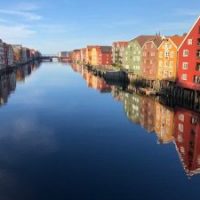UW Botanic Gardens weather impacts Friday, Feb. 8 – Sun., Feb. 10

UW Botanic Gardens facilities will be closed beginning at 12:30pm on Friday, February 8, and continuing through Sunday, February 10. Our facilities and programs are being impacted by anticipated inclement weather. Please check back on our Facebook and Twitter pages for updates going into next week.
Washington Park Arboretum impacts:
The Graham Visitors Center will be closed starting at 12:30pm Fri., Feb.
Early Flowering Rhododendrons at the Washington Park Arboretum

1) Rhododendron arboretum hybrid
This Rhododendron, located in the Joseph A. Witt Winter Garden, dutifully produces its blooms of bright rose in the dark of winter.
The UW Botanic Gardens’ database has records of it blooming in December, January, and February.
2) Rhododendron floribundum
Native to the southern central area of China, and was first described by Adrien René Franchet.
Franchet was a French botanist who was noted for his extensive work describing the flora of China and Japan, based on the collections made by French Catholic missionaries in China – Armand David, Pierre Jean Marie Delavay, Paul Guillaume Farges, Jean-André Soulié, and others.
Volunteers Give Back on MLK Day of Service 2019 at the Union Bay Natural Area

“The time is always right to do what is right.” – Martin Luther King Jr.
While championing civil rights, Martin Luther King Jr. was also a strong advocate for environmental justice. In honor of MLK Day of Service 2019, over 30 dedicated volunteers came ready to work to help restore valuable habitat for wildlife in the Union Bay Natural Area (UBNA) at the Center for Urban Horticulture.
Staff Spotlight: Brian Thompson

Brian Thompson’s interest in gardening started at an early age when his parents gave him a dozen gladiolus corms for his seventh birthday. As they grew and bloomed, he began to record the varying plant heights, size and number of florets, and the impact of the environmental factors, such as his brother’s lawnmower, on their success. As other plants, bulbs, and seeds were added to that early garden, an almost equal fascination took hold with the accompanying data logs, site maps, and charts one could prepare.
Read moreSelected Cuttings from the Witt Winter Garden at the Washington Park Arboretum

1) Chimonanthus praecox Wintersweet
The light yellow flowers are debatably the sweetest of the Witt Winter Garden.
Wintersweet is highly cultivated in China where the flowers are used in teas and herbal remedies despite the fact that the seeds are poisonous.
Also in China, the flower petals are used in potpourri and to scent linen.
2) Cornus sanguinea ‘Midwinter Fire’ Midwinter Fire Dogwood
Cornus sanguinea is native to Europe.
Read moreLearning About Outdoor Education in Norway

Among the many programs at UW Botanic Gardens, the Fiddleheads Forest School stands out as a unique program for the youngest learners. With the Washington Park Arboretum as its classroom, the outdoor preschool program offers students the opportunity to explore the natural world, learn from experimenting, and practice stewardship of the environment.
Fiddleheads Director and Co-Founder Sarah Heller spent a week in Trondheim, Norway in September 2018.
Winter Interest at the Washington Park Arboretum

1) Camellia sasanqua Sasanqua Camellia
This glossy evergreen shrub with attractive flowers is native to China and Japan.
There are many cultivated varieties of this species with the first ones being recorded from Japan around 1700. Over 15 varieties reside in our Camellia Collections.
The plant was valuable to early Japan as the leaves were used for tea and the seeds used to make tea seed oil.
Fall Highlights of the Arboretum Creek

1) Taxodium distichum Bald Cypress
This deciduous conifer in the family, Cupressaceae grows in marshy and seasonally inundated soils.
Bald Cypress are famous for their “knees”, woody conical projections that emerge from the soil.
The purpose of these knees is still not entirely known. Some speculate they help oxygenate the roots or provide stability in the often loose swampy soils this species prefers.
Summer Camp Staff Nominated for Governor’s Award

Our Pre-K summer camp staff has been nominated for the Governor’s Youth Employer Award in recognition of their work this year with students from YES II. Youth Employment Solutions (YES) is sponsored by the Department of Services for the Blind (DSB) and the Washington State School for the Blind to focus on career preparation. YES II is a six week program that provides valuable work and learning experience to high school students.
Read moreAutumn Colors Appear at the Washington Park Arboretum

1) Viburnum rhytidophyllum Leatherleaf Viburnum
This large evergreen shrub grows to 6-10 feet and is native to central and western China.
Fragrant creamy-white clusters of flowers emerge in spring, followed by berries in the fall that first appear red and change to glossy black.
You can view this shrub along the east side of the Arboretum Loop Trail in the Viburnum Collection.